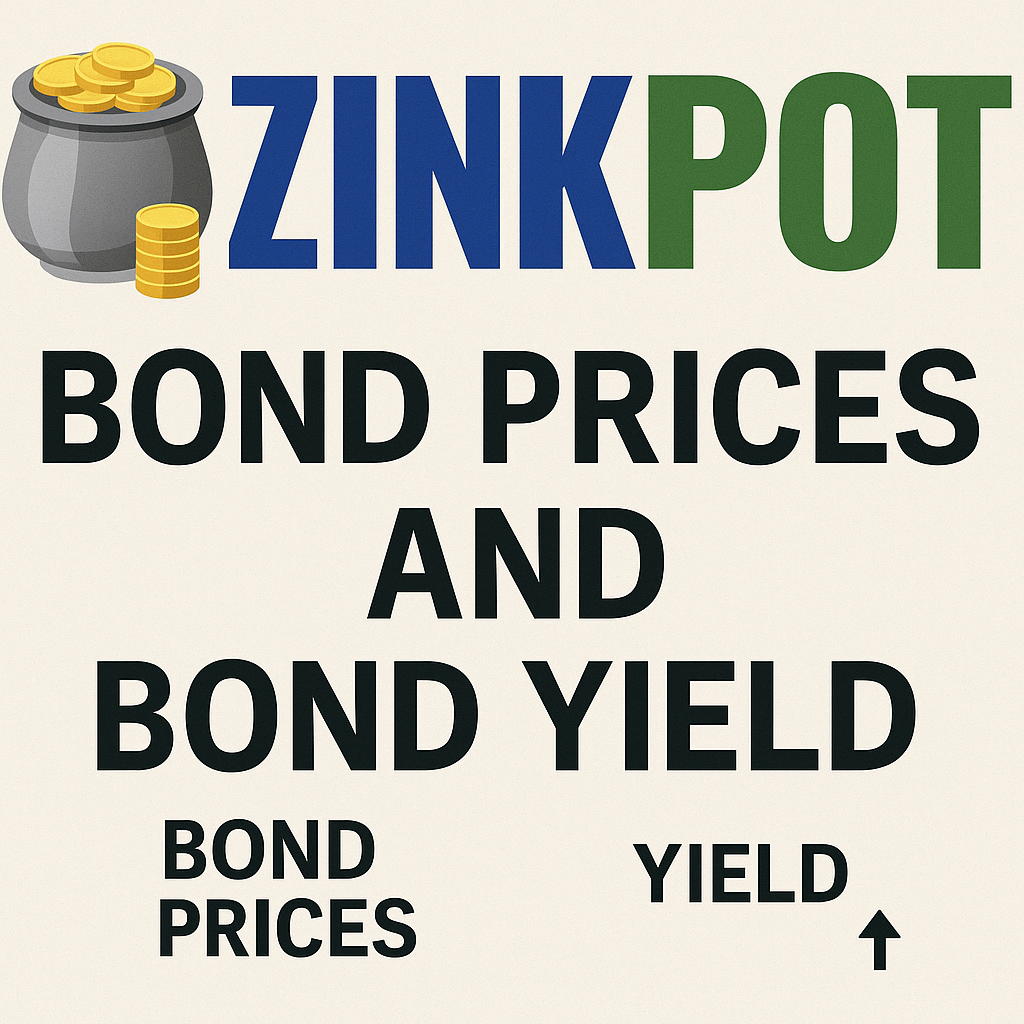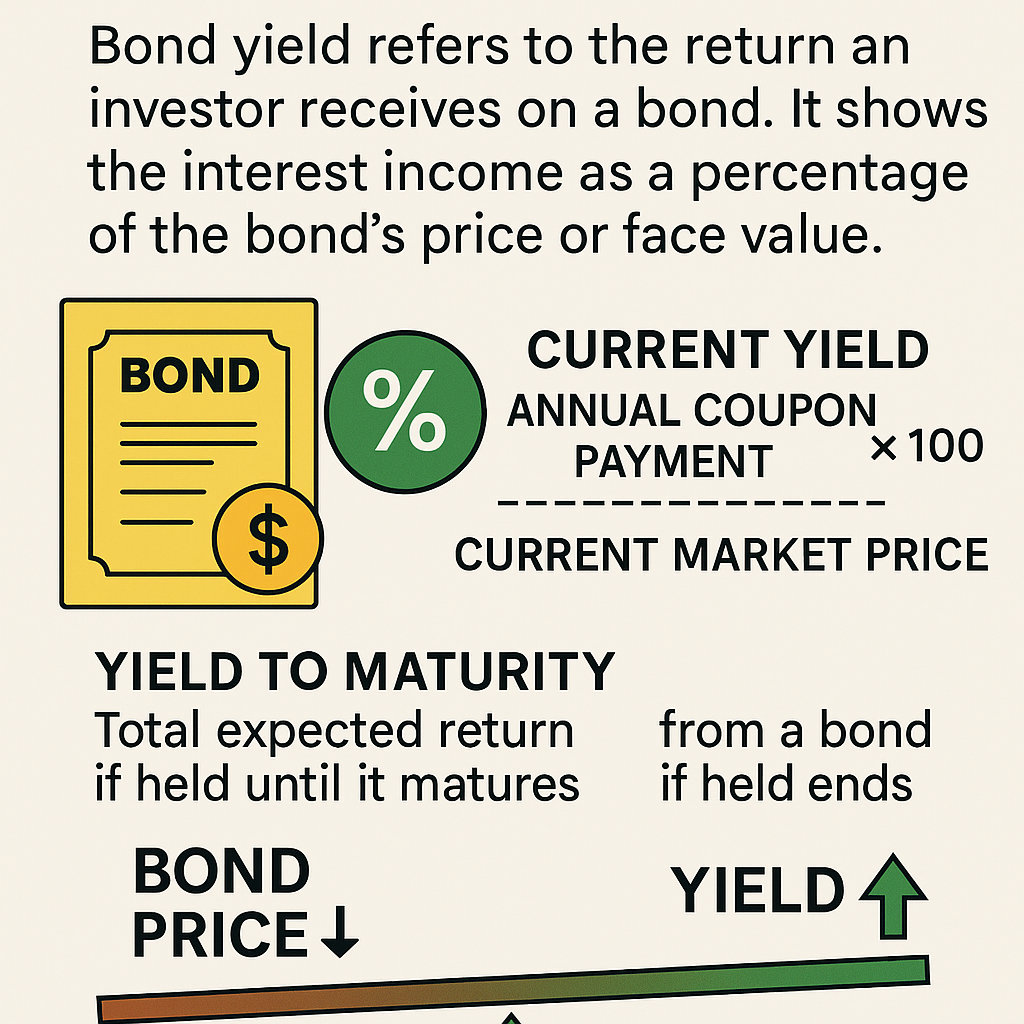

It is a debt instrument that provides investors with a fixed income via interest payments and repays the principal amount on a pre-defined maturity date. Bonds are safe instruments free from the ups and downs of that of an equity market. Bonds are an important part of the financial market and act as a crucial source of capital for corporates and the government.
For example : There is a 10-year bond with a price of Rs 10000 and a coupon amount of Rs 500. The yield on this bond is
Yield = (500/10000) x 100% = 5%
The yield and bond price have an inverse relationship. When the bond price is lower than the face value, the bond yield is higher than the coupon rate. When the bond price is higher than the face value, the bond yield is lower than the coupon rate. So, the bond yield calculation depends on the price of the bond and the coupon rate of the bond.

If the bond price falls, the yield rises, and if the bond price rises, the yield falls.
Suppose the price of the bond increases from Rs 10000 to Rs 11000 due to strong investor demand. So, the bond now trades at a price of 10% above the issue price. However, the coupon amount remains the same at Rs 500. Now the yield changes to (500/11000) x 100% = 4.54%. So, the bond price has gone up, which causes the yield or the interest rates on the bond to decrease.
| Term | Description |
|---|---|
| Bond Yield | Return earned from a bond |
| Current Yield | Coupon ÷ Market Price |
| YTM | Full return till maturity |
| Yields Rise When | Prices fall or interest rates increase |
Comments
Write Comment